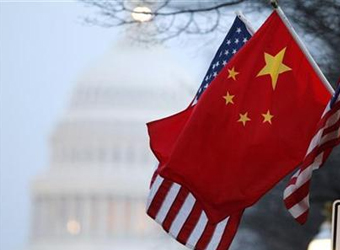China, the world’s largest consumer of rice, is now asking the U.S. for rice.
For the first time ever, Asia’s economic giant will allow imports of American rice, the U.S. Department of Agriculture announced Thursday. That comes as a welcome signal after annual trade talks between the two nations broke down this week without a concrete outcome. And although it is just a small part of an expansive trade relationship, the rice deal signals that, at least for now, the threat of a trade war is tabled as each side is still engaging the other.
China’s rice market has technically been open since it joined the World Trade Organization IN 2001. But the U.S. and China have spent a decade working on setting standards for rice producers and facilities interested in exporting the grain. That effectively shut U.S. rice out of China, which imported 5 million tons of the grain last year.
The rice agreement isn’t the first inroad President Donald Trump has made with China, but its timing after the lackluster trade meeting — which occurred after a 100-day period for the two nations to tackle the trade imbalance — is key.
Looking ahead, there could be more specific product agreements — like the rice deal — from the two countries because the Trump administration wants “something measurable … that they can brag about,” said trade expert William Reinsch of the Stimson Center. He pointed to an early success from the White House in putting the finishing touches on lengthy negotiations to allow American beef exports to China, ending a 14-year ban.
“Wins thus far on beef and other areas are steps in the right direction and positively benefit U.S. companies operating in those industries,” said Jacob Parker, vice president at the U.S.-China Business Council, who urged that momentum on trade deals could be leveraged to address other issues, such as getting China to open up its capital markets and to loosen investment restrictions for foreign firms.
One continued point of contention has been steel with the U.S. accusing China of dumping excess steel around the world, pushing down prices and hurting steel producers. The U.S. is currently investigating whether certain imports, including steel, are a threat to national security.
Reinsch also said the U.S. and China couldn’t come to an agreement on steel this week. The “U.S. sought specific commitments on steel capacity reduction and the Chinese declined to give that … so they parted ways,” he said.
It was unusual, as both sides usually try to come up with some success at the end of the talks, but this time, “there was no attempt to do that,” he said. “That’s not good news, frankly, because I think what that will do inside the administration is encourage the hard liners to use it as an excuse to take some unilateral action.”
Steel has been a continual point of contention, with the U.S. accusing China of dumping excess steel around the world, pushing down prices and hurting steel producers. The U.S. is currently investigating whether certain imports, including steel, are a threat to national security.
“This could trigger additional U.S. tariffs on steel imports from China and other countries, creating escalating bilateral trade tensions,” said Rajiv Biswas, Asia-Pacific chief economist with IHS Markit. He noted that last year’s G-20 summit in Hangzhou saw the creation of a steel forum to address global excess capacity, but failed to report progress at the recent meeting in Hamburg.
On top of all that, “the U.S. has also been disappointed by lack of progress in China’s efforts to force North Korea to return to peaceful dialogue to reduce military tensions on the Korean peninsula,” he said. With recent trade data showing rising trade flows between China and North Korea, “this has soured U.S.-China bilateral trade relations further.”
One thing that was agreed to this week, however, was a one-year economic plan to identify issues and continue the dialogue between the U.S. and China.
Chinese state media continued to urge that cooperation is the “only realistic choice” given the importance of trade and investment between the two nations, according to China Daily. The state paper called the one-year plan “encouraging.”
“The U.S.-China commercial relationship has long been the ballast of overall U.S.-China relations,” Parker said. “We hope that trend will continue.”
Source: CNBC
